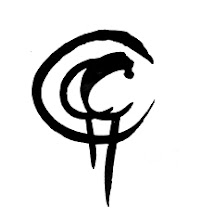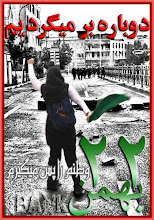The C Word has recently taken up membership of the Society
for Cutting up Books. No, this is not the militant wing of a dodgy political
pressure group, it is a celebration of that Ur moment when exasperation becomes
the creative act that results in the taking up of a Stanley Knife to slice
through the spine of a very fat book.
Let me explain. Scubbing is the act of cutting along the
length of the spine of a large, heavy paperback - either a normal ‘cheap’ paperback or one of the glossy
text-book sort – and dividing it into smaller, lighter sections, thus creating
a number of portable booklets rather then one book which is so heavy you can
barely lift it off the shelf. The scubbed sections can then be placed in those
nice transparent ‘pockets’ with holes punched down the side and placed in a
file for safe-keeping. When taking the tube, bus, a train or just for reading
in bed, you need take only one of the sections which is light enough to carry.
This vastly increases your chances of reading the book, since, in its original
published form, it was too heavy to be taken out of the house and too heavy to
read in bed. Let’s face it, how many of us lead the sort of life where we can
‘read in the library’ or ‘in the drawing room?’ Quite. Scubbing, in short, is
what you do with books which are not available on Kindle. Where art books are
concerned, that’s most of them.
The first book I scubbed was Glen Adamson’s ‘The Craft
Reader,’ a magnificent book if only one could hold it up longer than five
minutes. It seemed particularly appropriate that this should have been the
first. Adamson’s book is published in sections (1-7), – all sewn together in
one volume – daft, but no matter. It is an anthology of craft writing. Section
1 deals with the ‘how-to’ writing. In his introduction to the section he
writes:
As is obvious from the sheer volume of
instructional publications produced annually, most are never put to direct use.
Books are given as gifts or bought on impulse, page through and left on the
shelf.
He goes on to say that the voluminous heaps of unread
literature have an additional purpose to that intended which is to attest to
the aspirations and identity of the would-be reader. Bearing this in mind, and
considering that I had only just started reading the book, how could I allow
myself to leave this book, unread – or at least unfinished- on the shelf simply
because it was too heavy to read on the tube? So began my membership of SCUB.
That was almost three years ago. Since then I have scubbed a Lonely Planet
Guide to Iran, Salman Rushdie’s, ‘Midnight’s Children,’ and now, I’m happy to
say, James Joyces’ ‘Ulysses’ has been so honoured – neatly cut into three manageable
morsels and may well be cut again if I need to study another section at close
range, as it were. (See the The C Word Supplement for more on this – it concerns
my next body of ceramic work, Molly’s Odyssey.) So, my aspirations
to being a well-read potter, and the instructions in Adamson’s book as to how
to achieve that, are now assured. One more thing: The Craft Reader IS a magnificent book. Much has been said already of its vast scope, its richness and its breadth of understanding of what craft is. I will just add it's worth getting for the excerpt from George Sturt's, 'The Wheelwright's Shop,' alone. Read this and weep! And not just for reasons of the writing. The following extract is from Adamson's introduction to the excerpt:
Sturt had a basic conviction that it was
only through direct, physical experience that one could understand workmanship,
or even raw materials: ‘My own eyes know because my hands have felt, but I
cannot teach an outsider the difference between Ash that is “touch as
whipchord”, and Ash that is “frow as a carrot” or “doaty”, or “biscuity”.’
Ends
Ends












































No comments:
Post a Comment